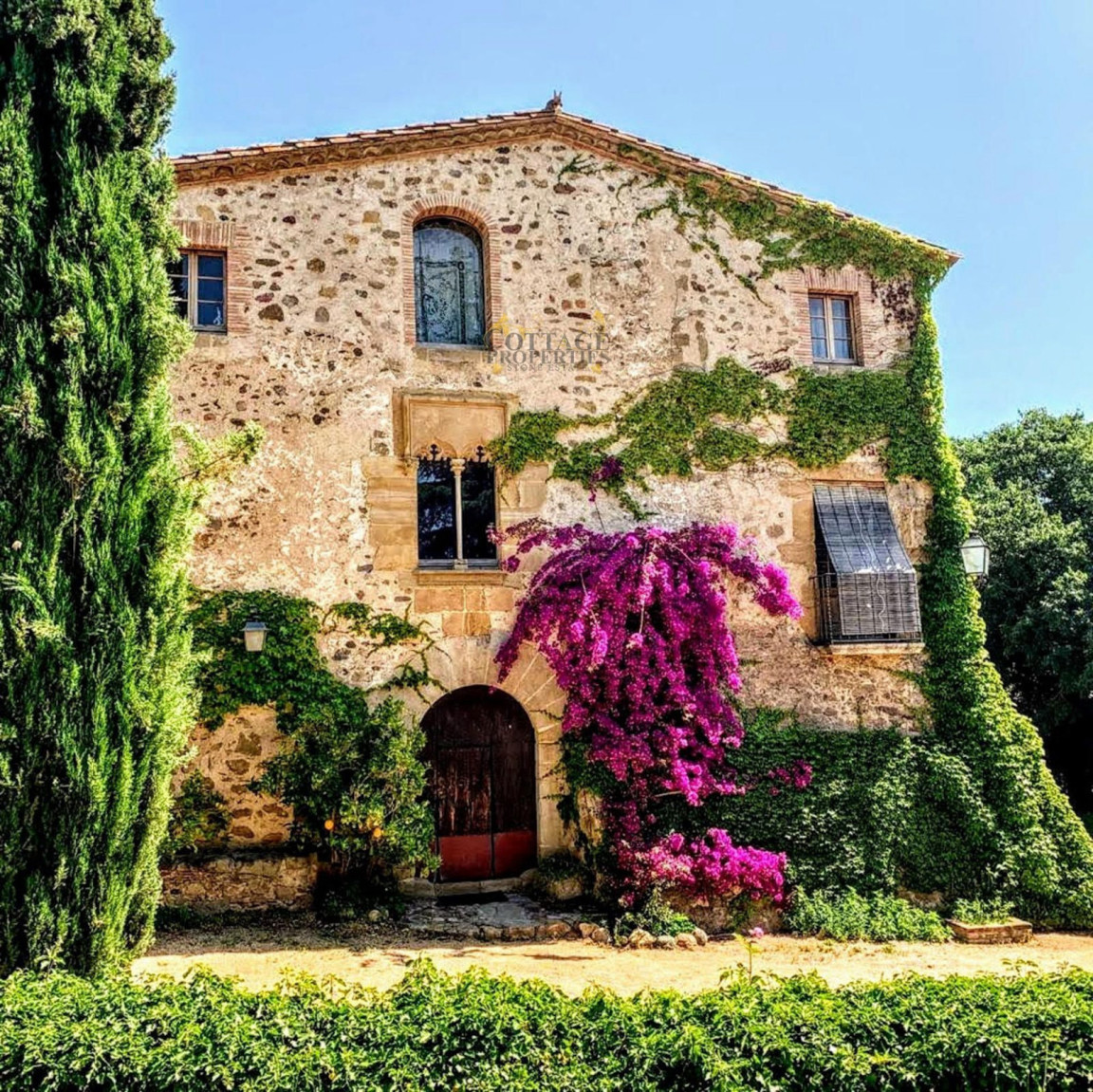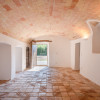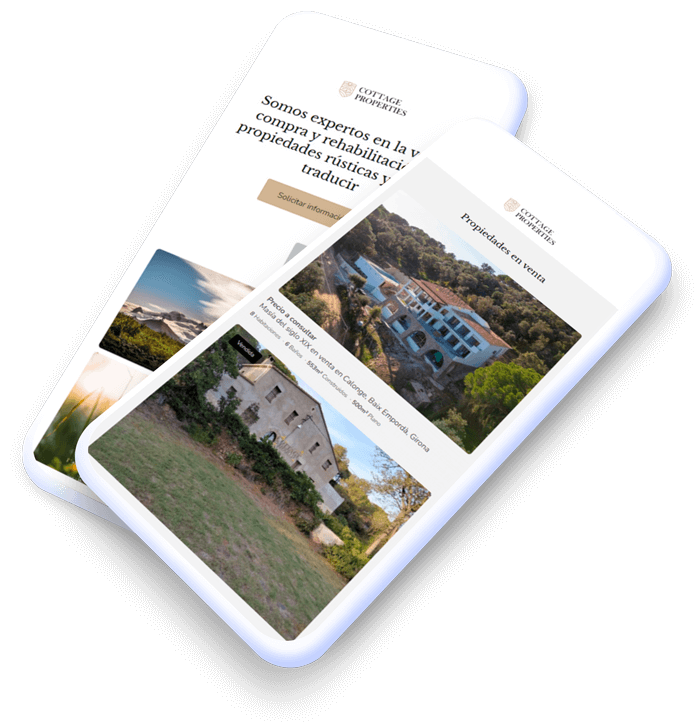Catalan Masias: 17 Important Features & Characteristics
Post published in Rural properties
In this article, you'll learn to identify a 'Catalan masia' through 17 of its most important elements.

In 2022, newspapers across Spain covered the story of the country’s “most expensive property” with an unknown value in the range of €20-30 million.
What kind of property was it?
It was a fully restored 18th-century masía with 20 bedrooms, vineyards, tennis courts and landscaped gardens spread over a sprawling 30-hectare estate in Girona.
Today, it seems normal to find luxury masias for sale among the most sought-after properties in Spain.
But it wasn’t always that way.
In the late 20th century nearly all of Catalonia’s Masias were abandoned due to rural depopulation and a devastating agricultural pest of phylloxera that ruined harvests across south-western Europe.
We are lucky that, in recent decades, more and more people are drawn to the restoration of Catalan masías and their reinvention into luxury homes, boutique hotels and rural escapes.
So what is it that makes the Catalan masía special?
In this post we’ll walk you through 17 of their most important architectural features and characteristics.
*This is part of a series on Catalan Masias. To read more on the history, cultural importance and meaning of the word ‘masía’ then click here to read our post titled “What is a masia?”
17 features and characteristics of a Catalan masía
Catalan masias were nearly all built before the turn of the 20th century.
With construction dates spanning a 900-year period – right back to the 11th century – masías are incredibly varied in terms of how they look and their architectural features.
Nevertheless, there are still a number of defining characteristics.
Below we’ll go through some of the main characteristics of masía, with note given to some of the variations that occur, due to geography, the period which they were built, the relative wealth of the owners, and so on.
1. Detached properties
Masias are exclusively detached properties and, traditionally, always surrounded by agricultural lands.
If there are cases of masias with neighbouring houses within eyeshot then it is because, in recent years, former owners sold of nearby parcels of land.
Or perhaps a former barn or outhouse has been restored and sold as a separate property.
In some cases you may find a detached masia sold together with other buildings that used to serve a variety of functions – from housing workers to stables, oil presses, wine presses, chapels, and so on – and can be renovated to perform a variety of uses.

2. Extensive estates
Masias traditionally were surrounded by an extensive estate.
The lands were used to tend to livestock or for agricultural purposes, and it’s still common to find masias for sale in Spain with lands up to and over 100 hectares (247 acres).

3. Agricultural past
The masia itself refers to the central building that formed part of a larger agricultural estate.
The landowner or manager – called the ‘masover’ in Catalan – typically lived in the masia with his or her family, while other workers may have lived in other buildings on the estate.
The most commonly cultivated crops were grapes to make wine, olives to make olive oil, and a wide variety of vegetables and grains for subsistence, as well as to sell on the market and trade for other goods.
The most common livestock were cattle for beef and dairy.

4. Two-storey layout
Masias most commonly are built with two storeys.
Traditionally, the ground floor was reserved for activities related to the rearing of livestock or the production of other agricultural goods. The top floor was where the family lived.
Sometimes, there is also be a third floor to the dwelling which would have been used as a granary, although it may have also been used as a drying room or other warehouse.

5. Oil and wine presses
Masias often feature oil presses for the production of olive oil, or wine presses that were used in the manufacture of wine.
Many of these still function to this day.
For example, the Priorat region in Tarragona is one of the most esteemed wine growing regions in the world and often a vineyard would be attached to a masía. The grapes would be made into wine, either in a separate building, or in facilities contained within the main building of the masía.
Many masias in the Priorat still exist to this day as internationally renowned wineries.
And, for a few lucky homebuyers, you can buy yourself a masia with vineyards and winepresses too.

6. South-facing
Masias tend to be south facing as this way they are able to enjoy the most sun, particularly in winter.
Of course, this applies mostly to the front entrance of the building. But also many of the rooms and windows and so on are positioned in a way to take advantage of the natural light.
This means that, to this day, they often provide stunning views and a healthy amount of sun.

7. Gabled roof
Masías often feature a gabled roof, in which two sloping sides meet in the middle and leave a triangular portion of wall between them, which is known as a ‘gable’.
These roofs are typical of masías as they help to channel any rain and snow away from the property and cause any moisture to run down the sides of the roof and away from the building.

8. Stone walls
Masías are typically all made from stone – in some cases from rough, unhewn stone; in other cases from worked stone.
The oldest masias may have the gaps between stones often filled with mud. But over the centuries, quicklime or cement was more commonly used to make sure no draughts got in and to help bind the stones to one another.
In certain areas of Catalonia where there was a lack of nearby stone, adobe is sometimes seen as the traditional building material.

9. Worked stone arches
Even if rough stone is used to construct the walls of a masia, the stone around the doors is usually always made out of finely worked stone.
This added a sense of opulence and grandeur to these otherwise rustic properties.
Up to the 16th century, most masías featured a voussoir arch (wedge-shaped stones and a central keystone). While later masias often feature this type of stone arch doorway, most masías built featured a lint (a horizontal beam or worked stone).

10. Small, scarce and upstairs windows
Most masías have very few windows, particularly on the ground floor.
The lack of windows helped to insulate themselves against cold in winter and the oppressive heat in summer, as well as providing for extra security, either when under attack or to protect against theft.

11. Thick walls
Masía often have very thick walls that are up to a metre thick.
These thick walls would have isolated against the cold in winter, while also keeping the interiors cool in summer.
These thick walls are also simply a product of the large rocks and boulders used in the construction of such properties.

12. Wooden beams
Masias nearly always feature exposed wooden beams – for example, to support the sloping roof.
Horizontal wooden beams are sometimes common to support a second or third floor, but not always (see below).
The beams are one of the key elements to look out for when considering purchasing a property, as they can add repair costs.

13. Catalan vault
The Catalan vault is a traditional architectural style popularised in Catalonia.
It’s a type of brickwork arch which forms a vaulted ceiling to support the floor above. The style is of Roman origin, but was popularised in the 19th early 20th centuries as a distinct style and exported through architects to other parts of the world – most famously the New York Grand Central Terminal.

14. Terracotta tiles
Most masias are covered with terracotta roofing tiles.
On rare occasions you can find masias in more mountainous areas, such as the Pyrenees, that have slate roofs.

15. Defensive towers
It’s not common, but some masías had defensive towers or walls for to protect the inhabitants, livestock and goods.
Defensive features are most common on the coast or regions further south than Catalonia, such as in the Valencian region where pirate raids were common up until the 19th century.

16. Central courtyard
Some masías have a central courtyard or interior patio that connects to the other parts of the compound.
These spaces also served as a protected place for family gatherings and other activities.

17. Chapels
Traditional masias were almost entirely self-sufficient.
Since it was common for the owning family and workers to live there exclusively and for extended periods of time, it’s not uncommon to find chapels in older and larger masias.

Characteristics of a modern Catalan masía
In recent years, masias have become highly sought-after properties, due to their historical features, rustic look and a growing interest in escaping the city and spending more time in nature.
We’ve already covered some of the features that traditional masía often have.
However, many masias for sale in Spain been restored and renovated now with modern features and appliances.
A masía on the market today might have all or some of the following:
Air conditioning
Underfloor heating
Double glazing
Swimming pools
Barbeque areas
Tennis courts
Solariums
Landscaped gardens
Golf courses
Solar panels
Large garages and ample parking space
Large, open plan fitted kitchens and diners

Interested in living in your own Catalan masía? Read this first
Masías make beautiful properties to own and live in in their own right.
You’ll have plenty of space and extensive grounds to explore, or to even make use of in growing your own crops, olive oil and wine!
In addition to that, they make for the perfect investment as these properties, particularly in recent years, have come to be in high demand as restaurants, retreat spaces, event spaces and boutique hotels.
But you must be careful.
Many masias are in need of partial or total restoration – a process which is difficult to estimate the costs for, if you are not an expert in rustic properties in Spain.
Many times a masia comes under strict building regulations overseen by the Catalonian government, which determine right down to the materials you must use during the restoration process.
Furthermore, it is difficult to know the right asking price of a masia without expert help.
Contact Cottage Properties today to find the perfect masia
If you’re looking to buy a masia in Spain, look no further than Cottage Properties.
We have the most extensive portfolio of masias for sale – with over 140 unique properties currently available for viewings on our website. Our team is made up of fully API-certified real estate agents and we have in-house conveyancing solicitors as well as a team specialising in rehabilitations.
When you find a property you like, just fill out your details to request a viewing and we’ll be in touch with your shortly.
Post published 22/11/2024 in Rural properties



